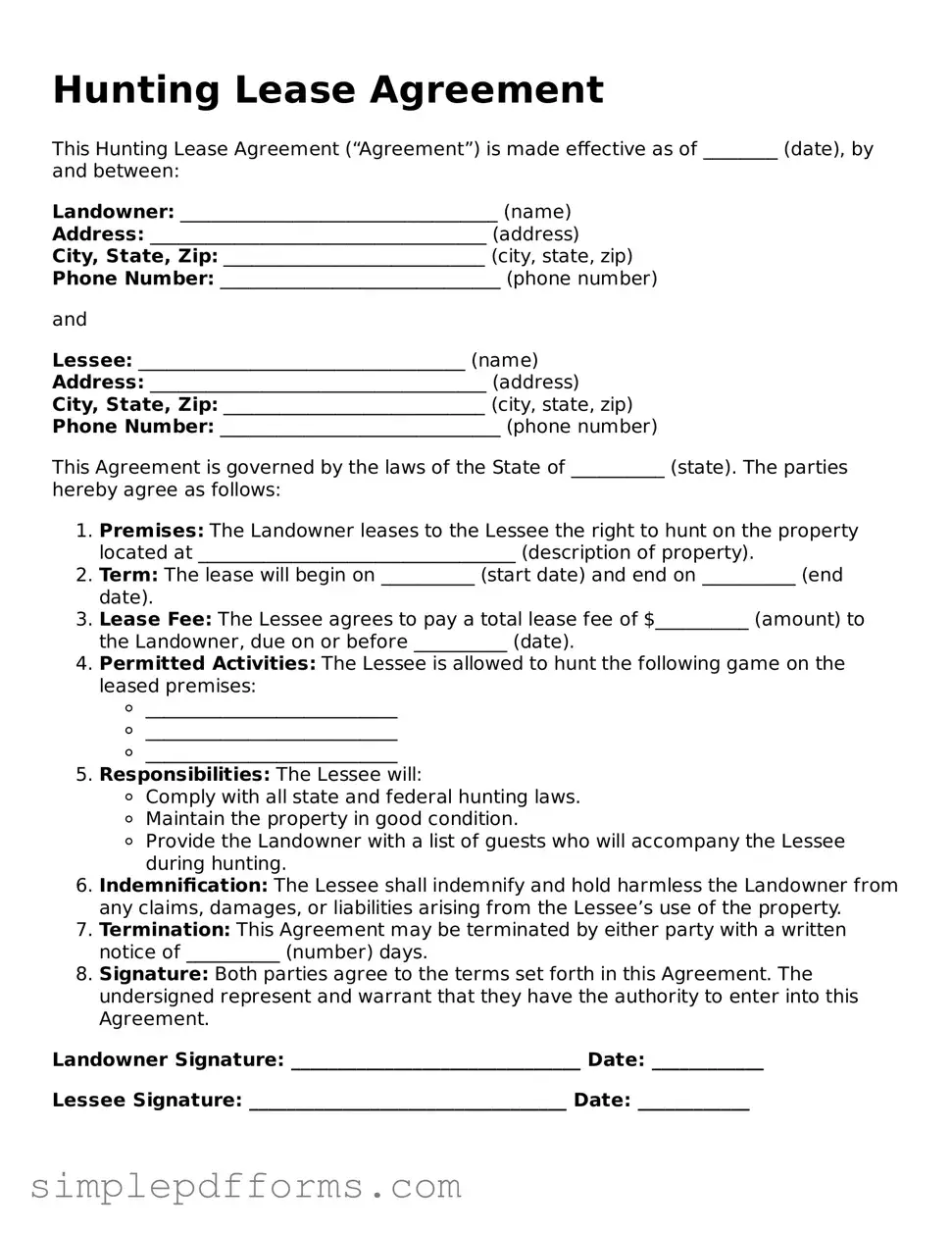Hunting Lease Agreement
This Hunting Lease Agreement (“Agreement”) is made effective as of ________ (date), by and between:
Landowner: __________________________________ (name)
Address: ____________________________________ (address)
City, State, Zip: ____________________________ (city, state, zip)
Phone Number: ______________________________ (phone number)
and
Lessee: ___________________________________ (name)
Address: ____________________________________ (address)
City, State, Zip: ____________________________ (city, state, zip)
Phone Number: ______________________________ (phone number)
This Agreement is governed by the laws of the State of __________ (state). The parties hereby agree as follows:
- Premises: The Landowner leases to the Lessee the right to hunt on the property located at __________________________________ (description of property).
- Term: The lease will begin on __________ (start date) and end on __________ (end date).
- Lease Fee: The Lessee agrees to pay a total lease fee of $__________ (amount) to the Landowner, due on or before __________ (date).
- Permitted Activities: The Lessee is allowed to hunt the following game on the leased premises:
- ___________________________
- ___________________________
- ___________________________
- Responsibilities: The Lessee will:
- Comply with all state and federal hunting laws.
- Maintain the property in good condition.
- Provide the Landowner with a list of guests who will accompany the Lessee during hunting.
- Indemnification: The Lessee shall indemnify and hold harmless the Landowner from any claims, damages, or liabilities arising from the Lessee’s use of the property.
- Termination: This Agreement may be terminated by either party with a written notice of __________ (number) days.
- Signature: Both parties agree to the terms set forth in this Agreement. The undersigned represent and warrant that they have the authority to enter into this Agreement.
Landowner Signature: _______________________________ Date: ____________
Lessee Signature: __________________________________ Date: ____________
